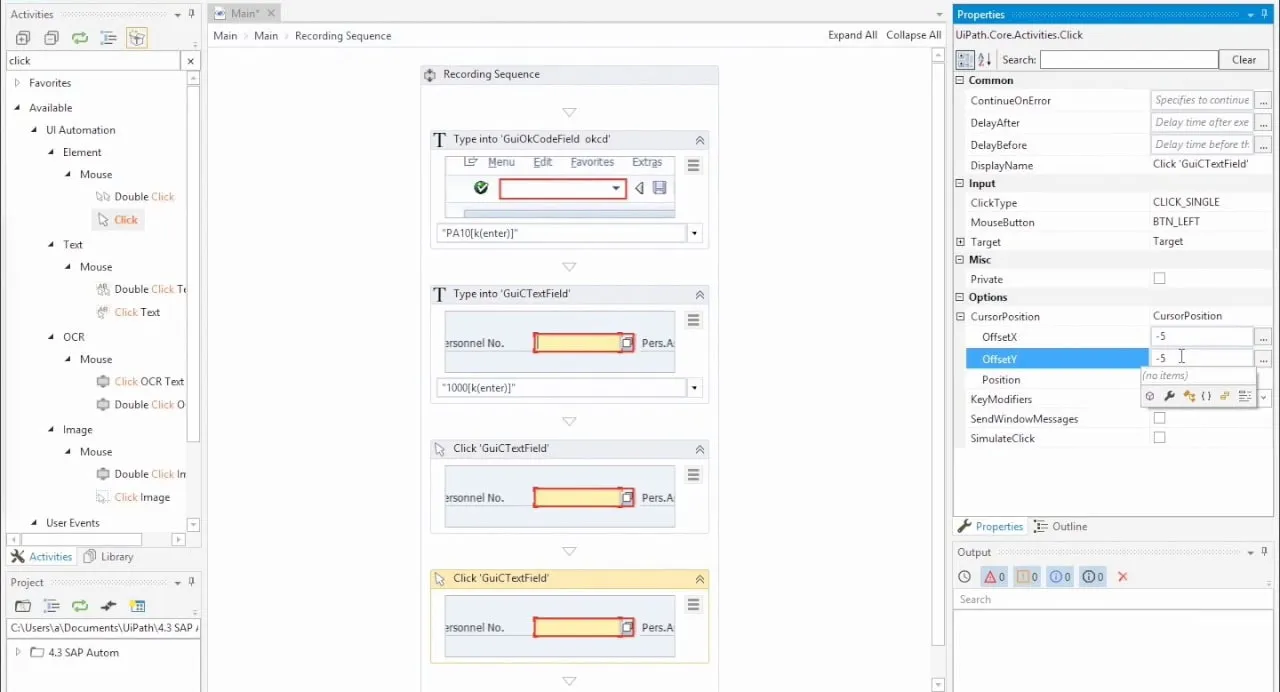What is Intelligent Automation?
Blog: AuraQuantic Blog
Generally, terms like “Digital Transformation” have been too broad and confusing, and as a result, companies do not know where to begin, which leads to frustration and failure. However, the truth is that a complete Digital Transformation will require more than one technology; hence the term Intelligent Automation, which is basically the automation of the company’s processes (including general corporate-level processes using BPM and specific task-level processes using RPA), supported by analytics and decisions made by Artificial Intelligence.
What is Intelligent Automation
Intelligent Automation is a term that describes a holistic solution for digital transformation, mainly based on process management (BPM) to orchestrate users, tasks, systems and robots (RPA) depending on the business needs at each moment.
On the other hand, it also contemplates the use of analytics and AI (especially Machine learning) to make automated and intelligent decisions, and case management to provide processes with enough flexibility for end-to-end case management success.
Finally, it is worth mentioning that another key feature of this trend is the integration between the different systems used in the company. Integration will prevent the duplication of data in the systems and users will need only work on one platform.
The 4 Pillars of Intelligent Automation
As simple as the term may sound, we are faced with the usual problem: “Ok, I understand, but how do I start to apply this transformation?”.
Well, Intelligent Automation is here to stay, since it proposes concrete solutions; in short, it consists of a successful and interconnected implementation of 4 key technologies, so let’s break them down and explain the role each one plays:
1) Business Process Management (BPM)
BPM is a process automation technology that includes the efficient coordination of people, systems and data.
The objective of BPM is to ensure that the operational and business process infrastructure is solid. Therefore, it acts as a base layer in the organization, automating the behavior of complex processes that require people to intervene in data entry and decision making, the use of systems at specific moments such as calculations or integrations, control of actions and data generation and storage.

Drawing a BPM process diagram with the AuraQuantic Modeler.
In other words, BPM plays the role of “orchestra conductor” in the organization, assigning which employee, external user or system should act at each moment, and ensuring the complete tracking and storage of all the information that is exchanged and generated during the process, from beginning to end.
2) Robotic Process Automation (RPA)
Robotic Process Automation is a technology which aims to reduce human intervention in computer applications, especially in repetitive tasks that vary very little in each iteration.
RPA works primarily by interacting with “high level” applications, which are the software layers at the graphic interface level, as oppose to machine language or programming code. Put more simply, it is a type of software that emulates the real interaction that a human would have with conventional computer applications.
This technology is suitable to replace simple and repetitive manual tasks such as data entry in applications. This means that employees have more time to focus on other branches of value for the company such as decision-making or improving customer relations.

Example of RPA process using UiPath.
It is a relatively fast technology to implement and can therefore bring immediate benefits to a company through time and cost savings, especially if it can be applied in the bottlenecks of certain processes.
3) Artificial Intelligence
Artificial Intelligence is the simulation of human intelligence by machines.
In other words, it is the discipline that tries to create systems capable of learning and reasoning like a human being.
Artificial Intelligence encompasses other concepts such as Machine Learning, Deep Learning, Natural Language Processing (NLP), Visual Recognition, Big Data, etc.

Artificial Intelligence and related categories.
Although it is a very broad concept and covers many levels (from simple automations to complex virtual assistants), it is worth highlighting the following virtues in the current business environment:
- Deciphering patterns from previous experience.
- Intelligent decision making.
- Prescriptive and predictive analytics.
- Improving the user experience.
4) Integrations
The connection and integration between systems is one of the biggest headaches for a company, since each system or software has its own peculiarities.
They generally offer an Application Programming Interface (API) to interact with, which is usually based on some standard such as SOAP (applied in Web Services) or REST (based on HTTP protocol), for example.
Integrations usually require code, but with a platform such as AuraQuantic, in addition to managing BPM processes, you can have native connectors (for example, with SAP or Dynamics CRM) and make connections based on SOAP or REST without using code and in a fast and simple way.

AuraQuantic BPM functionality as an integration platform between systems using connectors, Web Services and REST API.
For cases in which it is not possible to integrate via API, we would opt for RPA to undertake a superficial integration at the graphic interface level.
Main Objectives of Intelligent Automation
The main objective of intelligent automation is to improve the customer and employee experience and boost productivity.
In addition, it generates time and costs savings, significantly reducing human intervention in the process cycle, which allows employees to have more time to focus on creative improvements, strategy, making decisions, etc.
Another objective is the reduction of errors in the processes, as well as a reduction in paper usage, since this trend is completely oriented towards purely digital management.
Conclusions
In short, intelligent automation was born as a term related to digital transformation, but with the advantage of being better defined and proposes a real solution by combining four branches of technology: BPM, RPA, Artificial Intelligence and Integration.
An ideal case would be a company with a backbone orchestrated by workflows (using BPM) that involve users, systems, data and documents; uses RPA in specific moments and tasks (to tackle bottlenecks in previously manual tasks); with hybrid decision making between managers and automations based on Artificial Intelligence.
Finally, we complete the picture if we connect all the systems used by our company through integrations (API level when possible, and with RPA when not) and centralize the information generated by the processes in a main database. The data will be analyzed and feed the AI machine learning, to ensure better documented decisions.
The main objectives of Intelligent Automation are the same as always (and at the same time so difficult to achieve): to improve end-to-end customer experience and improve the productivity of our employees, getting rid of repetitive tasks and enabling employees to focus on tasks that add value for the company (creative improvements, new strategies and solutions, decision making, etc.) and of course savings in time and costs.
At AuraQuantic we recommend companies to perform (directly or through an external agent) an internal analysis of the organization to determine which of the 4 branches would be most beneficial for them to invest more money and effort.
AuraQuantic BPM addresses the entire orchestration of processes to coordinate users, systems and information from start to finish using intelligent workflows. In addition, it is capable of functioning as a platform for integration between systems, since it has SOAP (for Web Services) and REST connectors that can be launched from the processes themselves. The platform also has Artificial Intelligence mechanisms for automatic decision making based on generated data. Finally, for the aspects related to RPA you can consult our section of technological alliances to learn about its implementation from one of our specialized partners.
Get in touchThe post What is Intelligent Automation? appeared first on AuraQuantic.
